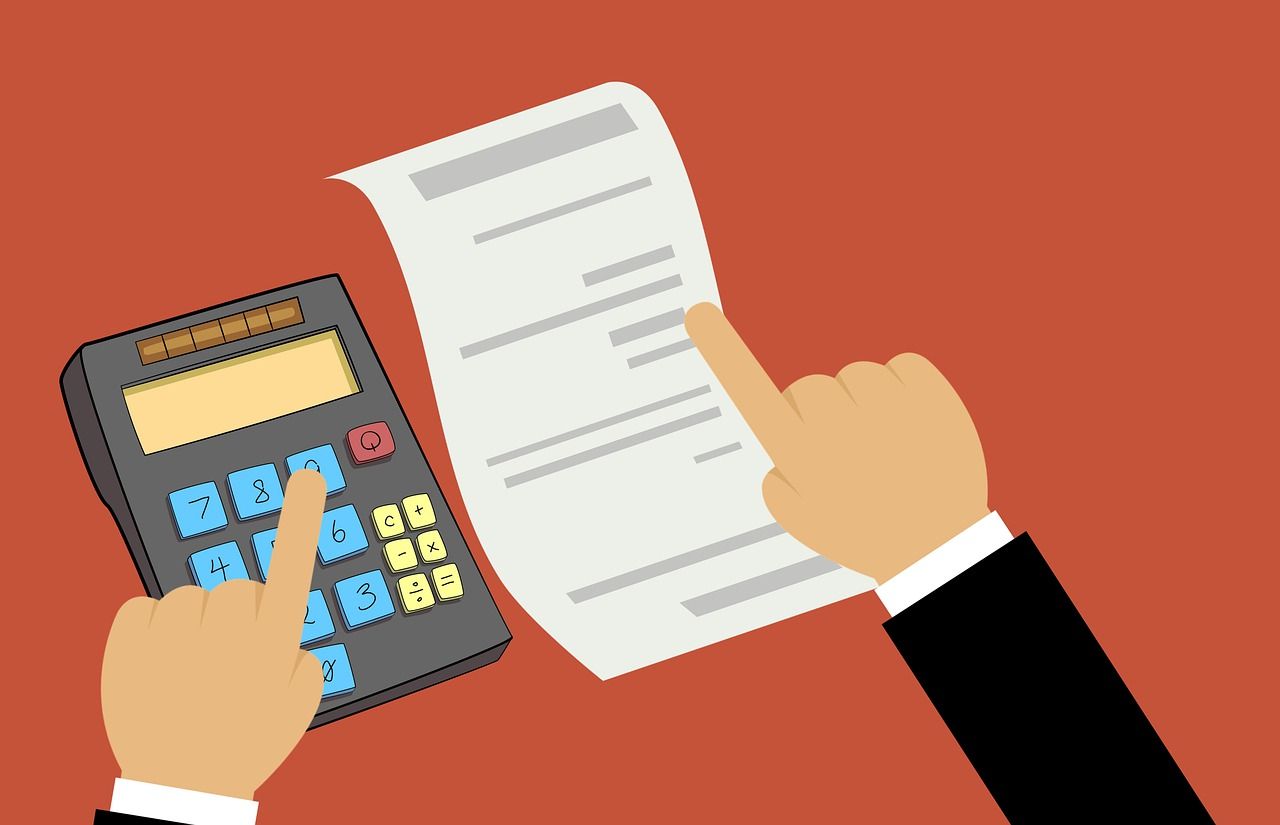9 Types of Personal Budgets

Have you tried creating a personal finance budget but have repeatedly been unable to stick to it? You may be using the wrong type of budget for your financial needs. Like health and personal goals, we all have different financial goals. The right budgeting method can help you lower monthly expenses, add money to your savings account, and dig out of debt in a way that doesn’t feel like a chore.
9 Types of Personal Budgets
- Traditional Budget
- 50/30/20 Budget
- Zero-Based Budget
- Goal-Based Budget
- Spending Cap Budget
- Envelope System Budget
- Pay Yourself First Budget
- Sub-Savings Accounts Budget
- Anti-Budget Budget
Choosing between different types of personal budgets is necessary as soon as you decide to budget. Deciphering between different types of budgets means determining how your income, savings, and expenses influence your spending plan.
All of the best budgeting apps can guide you toward keeping your finances on track. Still, they usually focus on just one personal budgeting method, and that method may not work for you. It’s important to understand the nuanced differences between types of personal budgets and how they lead people toward financial freedom.
What Is a Personal Budget?
One of the primary components of personal finance is a personal budget. A personal budget is a system that keeps track of your income, fixed expenses, discretionary expenses, and other parts of your cash flow. Its purpose is to give you a clearer picture of how you spend your monthly income and how you could put it to use for things like an emergency fund, direct payments toward debt, and a savings goal or two.
Understanding the importance of a budget can mean the difference between preventing debt accumulation and living far beyond your means.
Often, learning how to make a budget that works for specific financial pictures and goals is what keeps people from spending frivolously and helps them manage their money in a way that supports financial freedom. Once a budget is in place, it also becomes easier to learn how to get out of debt.
Regardless of your income, you can probably benefit from having a personal budget. Here are a few things it helps with:
- Debt payment planning: Getting into credit card debt is easy, but climbing out of it can be a challenge, especially with no plan in place. With a budget, you can allot a specific amount of your net income each month to pay off your debt beyond minimum payments to give a clear path to financial freedom.
- Retirement planning: If you have money left over after bills and other expenses, you can start tucking it away in a retirement account to help you plan financially for your future.
- Changing a spending habit: Spending habits can be difficult to break when you don’t realize how much of your monthly money they consume. Tracking everything with a budget gives you a visual account of your spending, which might entice you to change your habits.
- Paying bills on time: When you set aside all the money you need for bills, thanks to your budget, you’ll have that money readily available to pay the bills. That could mean fewer late fees and penalties that eat away at your savings or spending money.
- Bulking up a savings account: Add more money to your savings each month with a budgeting plan in place that gives you clear goals to work toward.
9 Types of Personal Budgets

Choosing between the several types of budgets that exist might seem overwhelming at first. Learn more about each type to determine the best financial support plan for your needs.
1. Traditional Budget
A traditional budget is one of the simplest types to use, and it’s probably the one that most people use to keep track of their income and expenses. With this budget type, you subtract your monthly expenses from your monthly income. Usually, this accounts just for regular expenses, like bills, debt payments, etc. Then, everything left over is extra money to spend, save, or put additional payments toward debt.
If you’re just starting out budgeting, the traditional one is an ideal type of budget to start with. It’s simple to compute, and it gives you a good idea of how much extra money you have after paying for necessities. However, if you need more guidance or clear goals, you might want to consider more goal-oriented types of personal budgets.
Learn more about Traditional Budgets >>
2. 50/30/20 Budget

The 50/30/20 budget is best for people who want to portion their income in a precise way. It’s based on percentages of your income, giving you a clear guide for where everything should go.
Here’s the breakdown of your income on a 50/30/20 budget plan:
- 50% for necessary expenses. Use your net income (after-tax income) to set aside 50% for household bills, groceries, and other necessities for yourself or your family.
- 30% for discretionary expenses. The next 30% is for things you want to spend your money on but aren’t necessities. For example, you can apply this money to discretionary expenses like streaming movie apps, potato chips for late-night snacking, or craft supplies.
- 20% for savings and debt. This portion of your income is entirely for getting yourself out of debt faster and bulking up your savings. However, don’t use this 20% for minimum payments on debt – that actually goes in the 50% portion. Instead, use this money to make additional debt payments, like $100 extra on your student loan, to escape from debt faster. As for savings, you can add money to a savings account, put some in an envelope for a vacation fund, or transfer funds to your retirement account.
Learn more about the 50/30/20 Rule >>
3. Zero-Based Budget
The goal of the zero-based budget is to get your income to equal zero. That doesn’t mean you need to spend all of the money you make, though. Instead, the goal of this budget is to give a clear spot for every dollar you earn, whether that’s to pay the electric bill or add to a savings bank account.
This budget plan will break down everything you earn into a budget category, such as bills, credit card payments, groceries, and savings. Allot your money how you see fit, making sure that every dollar has a purpose. In the end, you should have nothing left over.
Learn more about Zero-based Budgeting >>
4. Goal-Based Budget
A goal-based budget is based on clear goals you have for your money. However, it usually includes two or three primary goals, giving you some wiggle room to use the rest of your cash how you see fit.
Some examples of goals for a goal-based budget might be:
- Save 25% of my income each month
- Put 10% of my income into my retirement fund
- Add $50/month to my minimum credit card payment
- Spend no more than $300 on groceries each month
Any financial goal works here. As you reach goals or your priorities shift, you can switch your financial goals to ones that are more relevant to your needs.
Learn more about Goal-based Budgeting >>
5. Spending Cap Budget
Also known as the spending ceiling budget, the spending cap budget has you place a maximum cap on what you should spend for the month. This includes everything you might put toward savings or spend on discretionary expenses.
For example, say you make $5,000 a month. You might make your spending cap $4,500, meaning that once you reach $4,500 of spending, you stop using your money for the month. Whatever is left over is free for you to do what you wish, but it’s always a good idea to tuck it into savings.
Learn more about Spending Cap Budgeting >>
6. Envelope System Budget

The envelope budget system is one of the first types of budget plans. It’s best for people who like the visual of cash to help them see just how much they have to spend.
With this system, you’ll break down your financial goals into envelopes, like household bills, car expenses, and vacation savings. Cash out your full paycheck and split the cash into each envelope as you see fit. Use only what’s in each envelope for each goal.
Learn more about Envelope Budgeting >>
7. Pay Yourself First Budget
The pay yourself first budgeting method puts you, your financial goals, and your future financial health first. If you have a difficult time saving, this could be the right budget plan for you.
With this budgeting system, you’ll prioritize savings, whether that’s a savings account, retirement plan, or saving for college expenses. When you get paid, immediately move money toward your savings goals. What you have left over will then go toward discretionary expenses, bills, and anything else you need for the month. This unique form of budgeting is also referred to as a reverse budget system because it’s the reverse version of a traditional budget.
Learn more about the Pay-Yourself-First Budget >>
8. Sub-Savings Accounts Budget
A sub-savings account is a category within a savings account for something specific you’d like to save for. For example, you might create a category for vacation, a new car, or college within your primary savings account.
With the sub-savings account budget, you’re prioritizing your savings but creating detailed savings goals to work toward. This budgeting system requires you to set aside a portion of your income for savings and then break down that portion into smaller portions for each goal.
So, if you were to save 10% of your income each month, you might break that down into 5% vacation, 3% new car, and 2% college savings.
Learn more about the Sub-Savings Account Budget >>
9. Anti-Budget Budget
An anti-budget budget is the most relaxed type of budget. With this system, you put however much you want toward savings first. Then, pay your bills and necessary expenses. Anything left is there for spending however you’d like. If you like this type of budgeting, it may be worth trying the Oops budgeting app.
Learn more about the Anti-Budget Budget >>
Choosing a Personal Budget Strategy

Which types of personal budgets sound right for you? The one you choose probably has a lot to do with your personality.
| Type of Personal Budget | Description |
|---|---|
| Traditional Budget | Subtracts monthly expenses from income, ideal for beginners. |
| 50/30/20 Budget | Divides income into 50% for needs, 30% for wants, and 20% for savings/debt. |
| Zero-Based Budget | Allocates every dollar of income to specific categories until it equals zero. |
| Goal-Based Budget | Focuses on specific financial goals with some flexibility. |
| Spending Cap Budget | Sets a maximum cap on monthly spending to encourage savings. |
| Envelope System Budget | Uses physical cash in envelopes for different spending categories. |
| Pay Yourself First Budget | Prioritizes savings by setting aside money for savings first. |
| Sub-Savings Accounts Budget | Creates detailed savings goals within a primary savings account. |
| Anti-Budget Budget | A relaxed approach: save first, pay bills, and spend the rest freely. |
People who are very self-motivated might enjoy a more restrictive approach to budgeting that prioritizes savings. On the other hand, people with more laid-back personalities who just want to use a budget as a flexible guide toward financial help may prefer a more relaxed type of budget.
Your lifestyle also factors in. A strict budgeting system requires a lot of planning, so people without much time to spare might do better with a spending plan with some wiggle room. However, if you find it challenging to stop spending extra money when you have it, or you have a lot of financial goals in mind, a stricter budgeting method will probably help you the most.
Consider the types of budgets we’ve outlined in this guide. Which ones feel like budgets you can stick with? Choose your top two or three and try each one for a month or two. Then, commit to the one you feel best fits your personality, lifestyle, and goals.